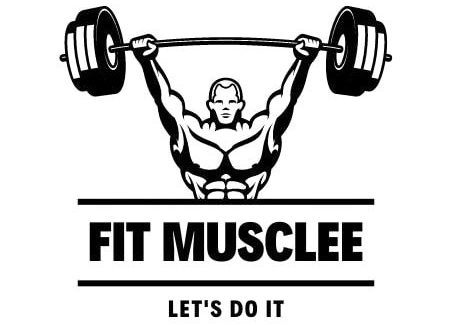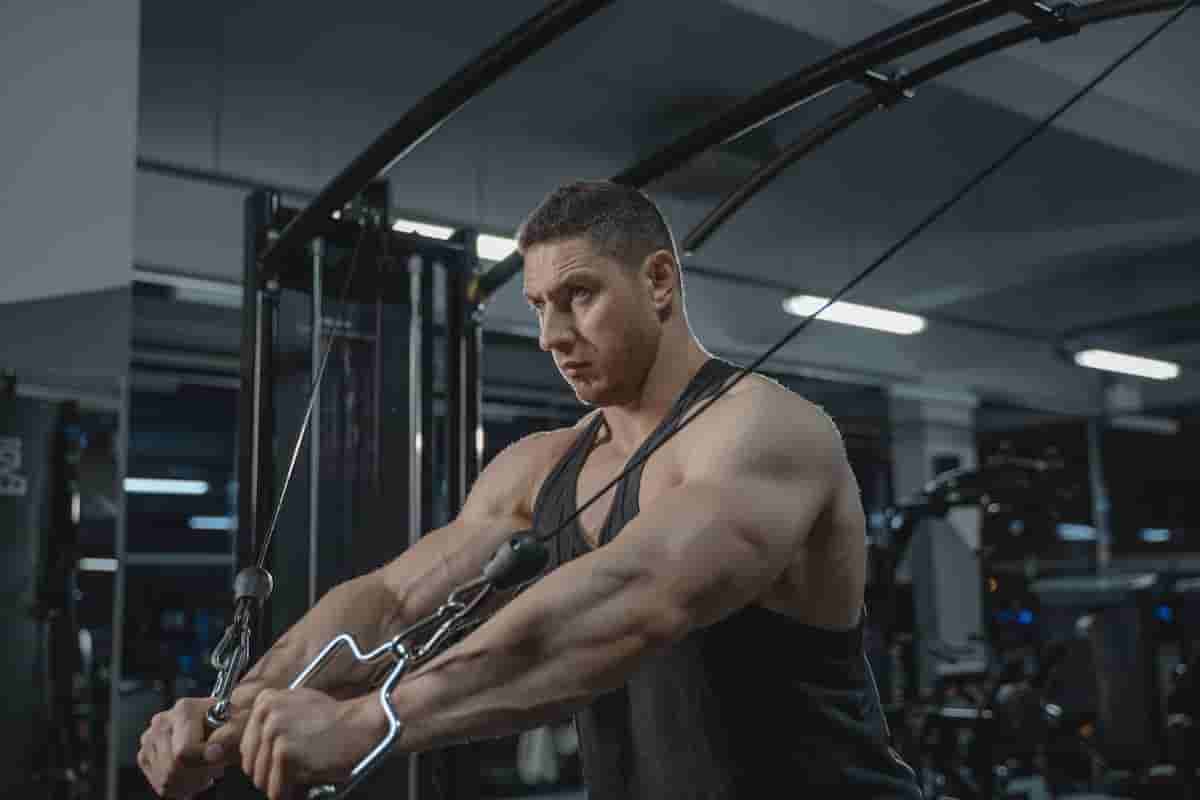Here is your complete guide to chest cable workouts.
Introduction to Chest Cable Workouts
Chest cable workouts are one of the most effective and versatile ways to build strength, muscle size, and definition in the chest area. Whether you’re a beginner or an advanced lifter, cables provide consistent tension and unique angles that free weights can’t always match. This comprehensive guide will take you through everything you need to know to maximize your chest cable workouts and build well-rounded, powerful pecs.
Chest cable workouts offer a dynamic and incredibly effective way to target your chest muscles with precision. Unlike free weights, cables provide constant tension throughout the entire motion, which helps stimulate muscle fibers fully, promoting growth and definition. By incorporating chest cable workouts into your routine, you unlock the ability to hit your chest muscles from varied angles, which can yield better overall development and prevent plateaus.
In this article, you will discover the anatomy behind your chest muscles, the key benefits of cable workouts, how to use the equipment, the best exercises, and tips to maximize growth. By carefully combining form, technique, and routine structure, chest cable workouts can transform your upper body strength and aesthetics.
Understanding Chest Muscle Anatomy for Effective Cable Workouts
To optimize your chest cable workouts, understanding the chest muscle structure is essential:
| Muscle Name | Location | Function | Cable Exercise Focus |
|---|---|---|---|
| Pectoralis Major | Large chest muscle | Adduction and internal rotation | Cable crossovers, fly variations |
| Pectoralis Minor | Under the pectoralis major | Stabilizes shoulder blade | Deeper stretch and activation |
The pectoralis major consists of two parts — clavicular (upper) and sternocostal (lower) — each targeted differently through pulley height adjustments during cable exercises. For example, a low-to-high cable fly targets the upper chest, while a high-to-low fly emphasizes the lower chest.
Benefits of Chest Cable Workouts
The unique advantages of chest workouts include:
- Constant Tension: Unlike dumbbells or barbells, cables provide continuous resistance throughout the motion.
- Versatility: Adjustable pulleys allow targeting different portions of the chest through multiple angles.
- Reduced Joint Stress: Smooth, controlled movements make cable workouts joint-friendly.
- Improved Muscle Definition: The cables isolate the chest muscles effectively to sculpt tone and shape.
Essential Equipment and Setup for Chest Cable Workouts
Before diving into exercises, here’s what you need to know about the equipment:
| Equipment | Use | Tips |
|---|---|---|
| Cable machine | Adjustable pulley heights for multi-angle workouts | Use moderate weight for control |
| Handles | Allows grips for flyes and presses | Choose comfortable grip |
| Rope attachment | Neutral grip for specific pressing | Good for cable rope fly |
Set pulley heights thoughtfully depending on the exercise (high, mid, low). Always start with lighter weights to master form and avoid injuries.
Top Chest Cable Workouts and How to Perform Them
1. Cable Crossover (Low to High)
- Setup: Pulleys at low position.
- Execution: Pull cables upward and together in an arc.
- Focus: Upper chest.
- Common Mistake: Using momentum instead of chest muscles.
- Reps/Sets: 3×12-15.
2. Cable Crossover (High to Low)
- Setup: Pulleys at high position.
- Execution: Pull cables down and across the body.
- Focus: Lower chest.
- Mistake: Locked elbows or poor stance.
- Reps/Sets: 3×12-15.
3. Standing Cable Chest Fly
- Setup: Pulleys at shoulder height.
- Execution: Bring cables together in front with slight elbow bend.
- Focus: Central chest.
- Mistakes: Overextending arms or unbalanced stance.
- Reps/Sets: 3×12-15.
4. Single-Arm Cable Crossover
- Setup: Pulleys mid-to-high.
- Execution: One arm at a time pulling diagonally across the body.
- Focus: Muscle balance and stability.
- Mistake: Over-rotating torso.
- Reps/Sets: 3×10-12 per side.
5. Cable Incline Fly
- Setup: Pulleys low, step forward on incline bench.
- Execution: Fly movement focusing on upper chest.
- Common Mistake: Using shoulders more than chest.
- Reps/Sets: 3×10-12.
Exercise Summary Table:
| Exercise | Target Area | Pulley Height | Reps/Sets | Key Tip |
|---|---|---|---|---|
| Cable Crossover Low-High | Upper Chest | Low | 3×12-15 | Controlled slow motion |
| Cable Crossover High-Low | Lower Chest | High | 3×12-15 | Keep elbows soft |
| Standing Cable Fly | Mid Chest | Shoulder | 3×12-15 | Keep stable stance |
| Single-Arm Crossover | Balance | Mid-High | 3×10-12/side | Core tight, slow return |
| Cable Incline Fly | Upper Chest | Low | 3×10-12 | Focus on chest contract |
Creating an Effective Chest Cable Workout Routine
Combining these exercises appropriately will maximize your chest workouts:
- Beginners: Start with 2-3 exercises, 3 sets 12 reps, full rest between sets.
- Intermediate: Add variations (single arm, incline fly), increase weight, overload progressively.
- Advanced: Mix cable with free weights (bench press), supersets, and drop sets for intensity.
Sample Routine:
| Day | Exercise | Sets x Reps | Notes |
|---|---|---|---|
| 1 | Low to High Cable Fly | 3×15 | Focus on upper chest |
| 2 | Cable Chest Press (Rope) | 3×10 | Engage mid chest |
| 3 | Single-Arm Cable Crossover | 3×12 each side | Correct imbalances |
| 4 | Cable Pulldown Chest | 3×15 | Engage lower chest/core |
Tips for Maximizing Results from Chest Cable Workouts
- Warm-up properly to avoid injury.
- Focus on mind-muscle connection by controlling each movement and squeezing pecs.
- Utilize progressive overload by increasing reps, weights, or sets gradually.
- Pay attention to breathing: exhale during chest contraction, inhale on release.
- Use slow eccentric (lengthening phase) to maximize muscle tension.
Chest Cable Workouts vs. Other Chest Workouts
| Feature | Chest Cable Workouts | Free Weights (Dumbbells, Barbell) | Bodyweight Exercises (Push-ups, Dips) |
|---|---|---|---|
| Resistance Type | Constant tension throughout full range of motion | Gravity-dependent resistance, varies by position | Uses body weight, limited by individual strength |
| Muscle Tension | Continuous tension optimizes muscle fiber engagement | Peaks mid-rep, tension decreases at start/end | Variable tension, usually less continuous |
| Range of Motion Flexibility | Highly adjustable pulley heights and angles | Less versatile, fixed movement patterns | Limited by joint and body mechanics |
| Joint Stress | Low; smooth, controlled movements | Higher; may stress shoulders/elbows if form breaks | Moderate; depends on exercise variation and form |
| Stability Requirements | Moderate; guided motion but requires core stability | High; requires balance and stabilizer muscle activation | Moderate; core and upper body strength crucial |
| Ideal Uses | Muscle isolation, hypertrophy, shaping | Building max strength, compound lifts, stabilizer work | Endurance, functional strength, beginner-friendly |
| Progression | Fine weight increments, easier to scale load | Larger jumps in weight, may plateau without variation | Limited by body weight; progress by reps or variations |
| Accessibility | Requires cable machine and attachments | Requires dumbbells, barbells, or bench | No equipment needed, can be performed anywhere |
Incorporating both cables and free weights into your training maximizes overall chest development and strength. Cables act as excellent sculpting tools for the chest after foundational strength gains from free weights.
Common Mistakes in Chest Cable Workouts and How to Fix Them
| Mistake | Issue | Correction |
|---|---|---|
| Using momentum | Reduces muscle engagement | Slow down movements |
| Wrong posture | Risk of shoulder injury | Maintain slight forward lean |
| Overloading weight | Compromises form, injury risk | Choose manageable weight |
| Limited range of motion | Poor muscle activation | Use full stretch and contraction |
Frequently Asked Questions (FAQs) about Chest Cable Workouts
Are chest cable workouts effective for muscle growth?
Yes, cables provide constant tension, crucial for hypertrophy, making them highly effective for muscle growth.
How often should I do chest cable workouts?
2-3 times per week is ideal, allowing recovery between sessions.
Can chest cable workouts replace bench press?
They can complement or substitute bench presses but are best combined for full development.
Read Also: Reverse Prayer Position.
What weight should I use on cable machines?
Use a weight that challenges you in the 10-15 rep range while maintaining proper form.
Read Also: Single Leg Stretch Pilates.
Are cable chest flies better than dumbbell flies?
Cable flies offer constant tension and varied angles, often making them more versatile than dumbbells.
Read Also: Glute Workouts With Dumbbells.
Can cable workouts help with chest muscle imbalances?
Yes, unilateral cable exercises like single-arm cable crossovers effectively address imbalances.
Read Also: Gym Equipment for Glutes.
Conclusion
Chest cable workouts stand out as a powerful and versatile method to build strength, size, and definition in your chest muscles. Thanks to the constant tension provided by cable machines, these workouts engage your chest fibers throughout every phase of the exercise, promoting superior muscle activation and growth. Whether targeting the upper, middle, or lower chest, cables allow for varied angles and smooth, controlled movements that reduce joint stress and improve muscle isolation.
Read Also: Creatine While Pregnant.
Incorporating a mix of cable crossovers, flies, presses, and unilateral exercises within a well-structured routine ensures balanced chest development and helps correct muscle imbalances. With proper form, progressive overload, and attention to technique, chest cable workouts complement traditional free weight exercises and can elevate your chest training to the next level.
Read Also: Best Exercise Machine for Glutes.
For anyone aiming to sculpt a stronger, more defined chest while minimizing injury risk, cable workouts offer unmatched benefits and adaptability. Consistency coupled with knowledge of anatomy and exercise mechanics will unleash the full potential of chest cable workouts in building an impressive upper body.
Read Also: Cable Shoulder Workouts.
Stay dedicated, focus on form, and enjoy the rewarding results that cable chest training can deliver!
Read Also: Cable Back Workouts.
References and Resources Used in This Article:
- ACE-Sponsored Research: Top 3 Most Effective Chest Exercises.
- Cable Chest Workout | Best Cable Exercises | ATHLEAN-X.
- 5 Best Cable Chest Workout Exercises That Are Effective.
- Differences in Muscle Activation and Kinematics Between Cable-Based and Selectorized Weight Training – PubMed.
- Chest workouts: Exercises for strength and function – Harvard Health.
- Best Chest Compound Exercises (Backed by Science).

